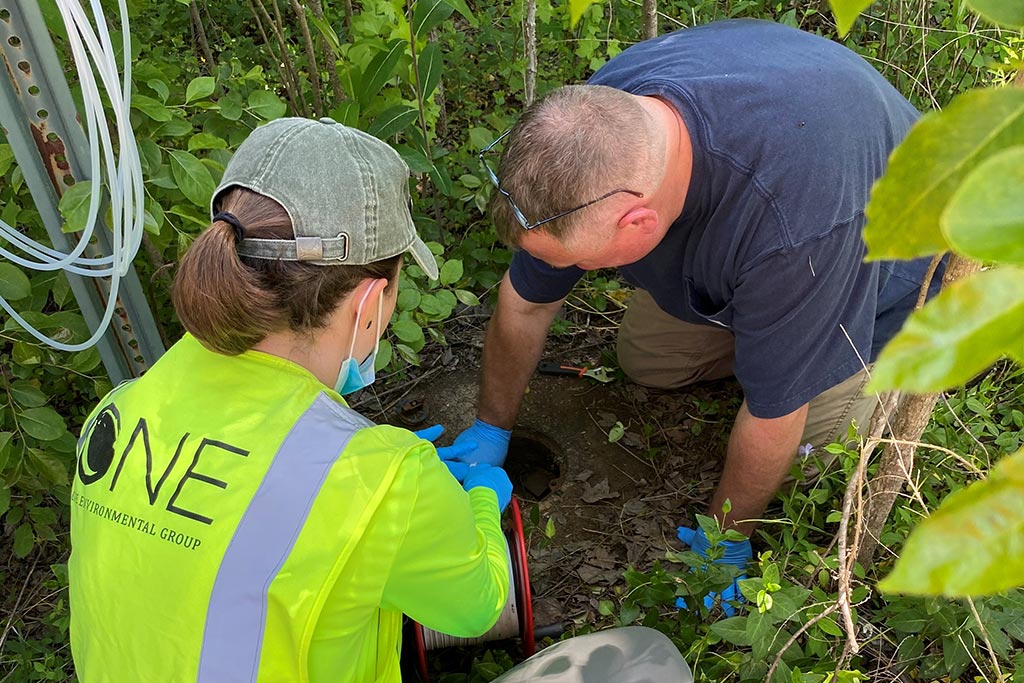From Permits to Plans, ONE Keeps Industry Compliant with Stormwater Requirements
ONE Environmental Group offers a range of stormwater consulting services, which include assisting industrial clients with applying for a stormwater discharge permit, developing an ensuing stormwater prevention plan and ensuring all requirements are met to maintain compliance.
The Clean Water Act established the National Pollutant Discharge Elimination System (NPDES) program in 1972 to limit pollutant discharges from industrial facilities and prevent them from reaching streams, rivers and bays. In Virginia, the state’s Department of Environmental Quality (DEQ) administers the Virginia Pollutant Discharge Elimination System (VPDES) program
Why is monitoring stormwater discharge a priority? ONE Principal Jeff Duncan likes to drive that point home during facility employee training, which is one of the stormwater permit requirements. He will ask for a show of hands to these questions:
- Who likes to fish in our rivers and the Chesapeake Bay
- Who enjoys swimming, boating or recreating in these areas?
Who would want to do these activities in impaired or polluted water? While enforcement measures in the form of penalties and fines are in place, it’s important for employees to understand why a stormwater plan cannot be an overlooked priority.
Stormwater runoff, if not handled properly, can carry industrial pollutants, which are then discharged into the waterbodies where we swim, boat, fish or simply enjoy from the shore. Contaminants can impair waterbodies, degrade biological ecosystems and even affect drinking water sources.
“It really helps employees to hear what’s behind why we do what we do,” Duncan says. “In reality, we’re keeping stormwater clean from the facility because it leads to that ditch that leads to that river and ends up in the bay where we fish, swim or boat.”
Contaminants can range from oil, grease, and metals to toxic chemicals and debris. Essentially any discharge from an industrial facility can impact stormwater runoff, which has the potential to pollute the water. A transportation facility is going to be focused on the impact of Total Suspended Solids (TSS). A material recycling facility would add monitoring for metals.
Check your Standard Industrial Classification (SIC) code to determine if your facility needs an Industrial Stormwater Permit. This four-digit code is a descriptor of the kind of work being done at your facility. It’s up to the owner/operator of the facility to know if a permit is required; ONE can verify whether a permit is necessary.
“Many owners/operators aren’t aware they need a permit,” Duncan said. “If they purchased the facility from another operator and the previous operator never had a permit, it might not be on their radar.”
A facility that operates under roof without exposure to stormwater can apply for a no-exposure certificate, which will likely require a site visit from DEQ prior to approval.
ONE can handle each of the steps required to obtain and comply with the permit, starting with the development of a Stormwater Pollution Prevention Plan (SWPPP). The plan specifies the party responsible for implementing the actions, lists best management practices and details monitoring requirements.
It’s imperative that best management practices are ongoing to ensure compliance continues. Once the permit is received, the process is ongoing, not over.
“We conduct facility inspections, monitoring and preparation of Discharge Monitoring Reports (DMRs),” Duncan said. “We are full service and can perform our services as an augmented staff member. We can implement the entire stormwater program.”
KEY STORMWATER CONSULTING CONTACTS: Jeff Duncan


